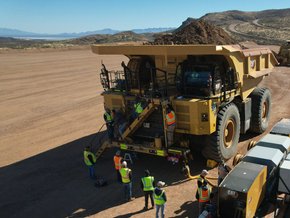The importance of building for clean energy transition

Currently, the operations of buildings account for 30% of global final energy consumption and 26% of global energy-related emissions. While direct emissions from the buildings sector decreased in 2022, buildings sector energy use increased by 1%.
Despite performance standards and energy codes increasing in scope and stringency across countries, and the use of renewable technologies is on the rise, “this decade is crucial for implementing the measures required to achieve the targets of all new buildings and 20% of the existing building stock being zero-carbon-ready by 2030,” commented IEA.
Rising energy performance requirements
From China to the United States (US), economies are increasing their energy performance requirements for both new and existing buildings through policies and industry standards.
Some notable decarbonisation progress include:
- China implementing the General Code for Building Energy Efficiency and Renewable Energy Utilisation requiring all new, expanded, or renovated buildings to be designed for energy efficiency.
- Japan revising its building regulations to require zero-energy performance for all new buildings by 2030 and all existing buildings by 2050.
- European Union (EU) revised its Energy Performance of Buildings Directive (EPBD) to support achieving climate neutrality in the building sector by 2050.
- US the American Society of Heating, Refrigerating and Air-Conditioning Engineers (ASHRAE) published zero net energy and zero net carbon standards.
Direct CO2 emissions
In 2022, direct CO2 emissions from buildings decreased to 3Gt, however, indirect increased to nearly 6.8Gt indicating an increased reliance on electricity. These trends do differ by region, in Europe emissions fell, while in the US increased driven by extreme temperature. In order to get on track with Net Zero, emissions must fall by 9% per year on average until 2030.
Beyond direct and indirect, 2.5 Gt CO2 in 2022 were associated with building construction, including the manufacturing and processing of cement, steel, and aluminium. “Altogether, buildings operations and construction emissions account for more than one-third of global energy-related emissions. Mitigation and adaptation measures are needed across the whole buildings value chain,” commented IEA.
Advances in energy efficiency will be key to boosting progress
To get on track with Net Zero, the energy intensity of the building sector needs to decline nearly 5 times more quickly over the next decade compared to the previous. This means that the energy consumption per square metre in 2030 must be 35% less than 2022.
Supporting infrastructure will be integral to deploying zero-carbon-ready buildings and will require coordination with infrastructure and device deployment.
“The feasibility and optimality of clean technology use in buildings relies on various elements of enabling infrastructure. These include distribution systems within buildings for ventilation and/or water, district energy networks for heating and cooling, electric and thermal storage devices, integrated control systems, and electric vehicle chargers,” explained IEA.
Investment in energy efficiency has increased by 14% to more than US$250bn in 2022, despite this growing investment in energy efficiency and clean technologies in the buildings sector, IEA reports that it still falls short of the levels needed in order to achieve Net Zero.
“International collaboration is critical to catalyse global action to decarbonise built environments and strengthen value chains for clean buildings technologies [...] support[ing] countries that have limited institutional capacity to design and enforce buildings policies and encourage private sector actors to better align their buildings products with net zero objectives,” said IEA.
- What Is It Like To Be A Woman In Construction?Construction Projects
- Bechtel & Westinghouse Boost Nuclear Construction in EuropeConstruction Projects
- B&W Engineering: Managing Sustainability in ConstructionSustainability & Green Building
- Technology Boosting Procurement Autonomy in ConstructionTechnology & AI






